ssp. moschata (Linnaeus, 1758)
Subfamilia: CERAMBYCINAE / Tribus: CALLICHROMATINI
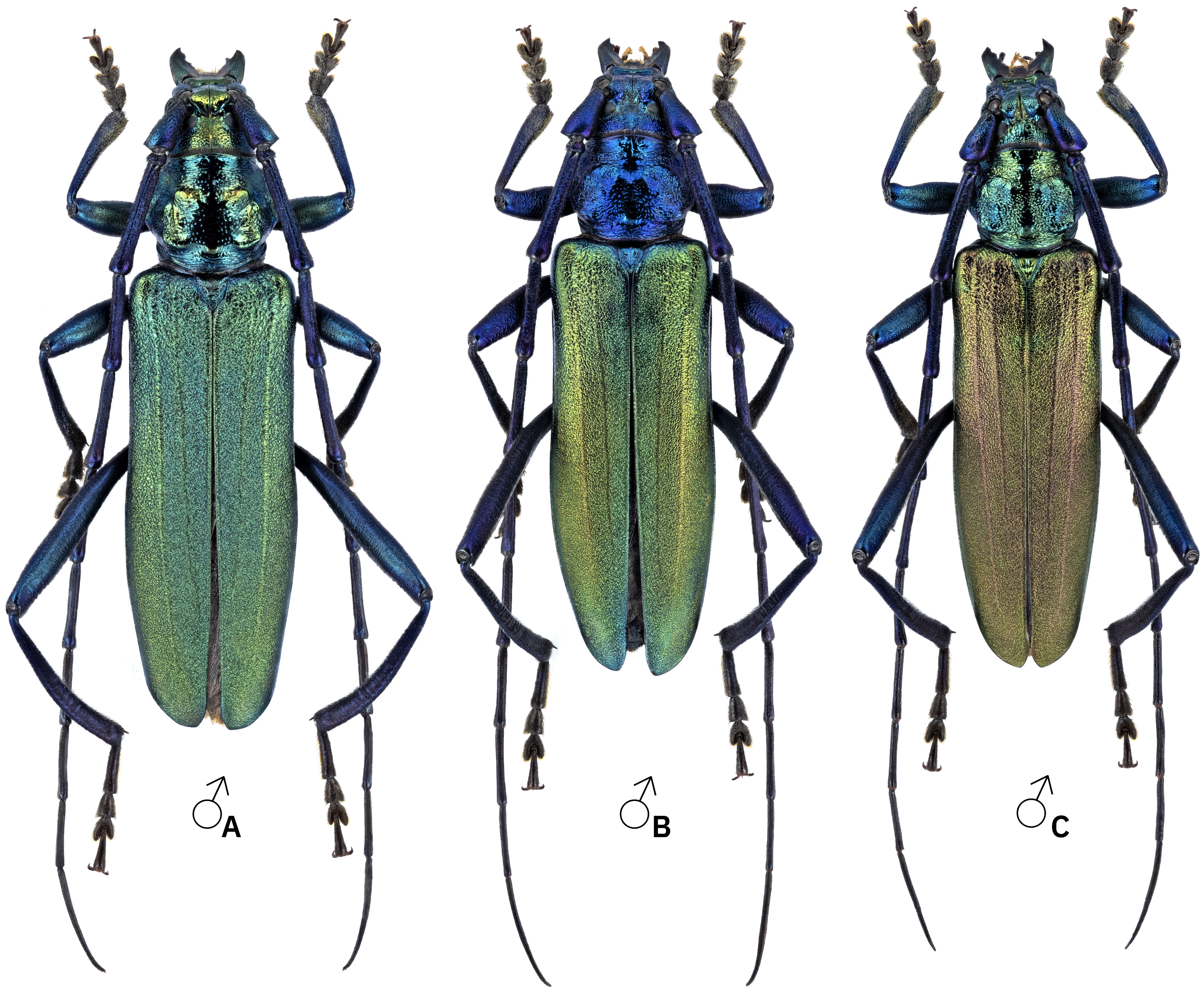
[Photo © David Navrátil, click on the picture for 4K resolution]
♂A - Pomezí village environs (Svitavy district, Pardubice region, East Bohemia, Czechia) on August 4, 2004 (collected by Vojtěch Navrátil)
♂B and ♂C - Agios Georgios (Άγιος Γεώργιος) village environs (North Corfu, Ionian Islands region, Greece) on June 6-17, 2003 (collected by David Navrátil)
Aromia moschata is undoubtedly one of the most beautiful European longhorn beetles, in addition, it is very variable in color, which can be green, less often blue, blue-violet to black-violet, or copper-red. A. moschata is a Palaearctic species widespread from North Africa to Japan with several subspecies of uncertain systematic value. The nominal subspecies, Aromia moschata moschata, is focused in the Central Europe, reaching westward the Cantabrian Mts., eastwards to the European part of Russia, southwards to central Italy and the Balkans, and northwards over most of Scandinavia and Great Britain [❖].
It is a species typical of willow riparian vegetation and floodplain pastures, forests with a high proportion of Salix caprea. Development preferably in old willows, in the past mostly occurred on trees, where branches were often pruned (Aromia prefers trees weakened after technical damage, such as pruning branches, repeated infestation, etc.). The larvae develop under the bark and in healthy or seemingly healthy wood of thicker tree trunks and weak branches from a thickness of 2 cm (in this case especially Salix caprea). Subcortical corridors extend into the surface layer of the sapwood. Perennial development, probably three years. Adults occur from the late May to September, most often in July and August (depending on the local climate and altitude) [▽].
Body length: 13 - 35 mm Life cycle: 3 and more years Adults in: May - September Host plant: primarily in willows (Salix, Salix caprea preferred in Central Europe), rarely in other decidouos trees Distribution: Palaearctic region
Aromia moschata adults emit a pungent odor, when more numerous, a pleasant odor spreads many meters away around the infested trees and often reveals the beetles present before they are seen. The secretion, produced in glands associated with the metasternal coxae, is a mixture of several terpenes (cis-iridodial, trans-iridodial, cis-rose oxide and trans-rose oxide). It is probably a chemical defense, or an alarm pheromone, however, the function of the aggregation pheromone is not excluded either, as it is often possible to observe intense emission of pungent-smelling terpenes even in non-endangered or undisturbed individuals [✧].
[❖]
Vitali F.:
Atlas of the Insects of the Grand-Duchy of Luxembourg: Coleoptera, Cerambycidae.
Ferrantia, Musée national d’histoire naturelle, Luxembourg 79: 1-208 [pages 44-45], 2018. [download]
[▽]
Sláma M.E.F.:
Tesaříkovití – Cerambycidae České republiky a Slovenské republiky.
[ Cerambycidae of the Czech Republic and Slovak Republic. ]
Milan Sláma private printing, Krhanice, 383pp [pages 103-104], 1998 [ISBN: 80-238-2627-1]. [download]
[✧]
Millar J.G. and Hanks L.H:
Chemical Ecology of Cerambycids.
In: Cerambycidae of the World - Biology and Pest Management (Qiao Wang, Ed.), CRC Press, Boca Raton, Florida, 161-208, 2017. [download]
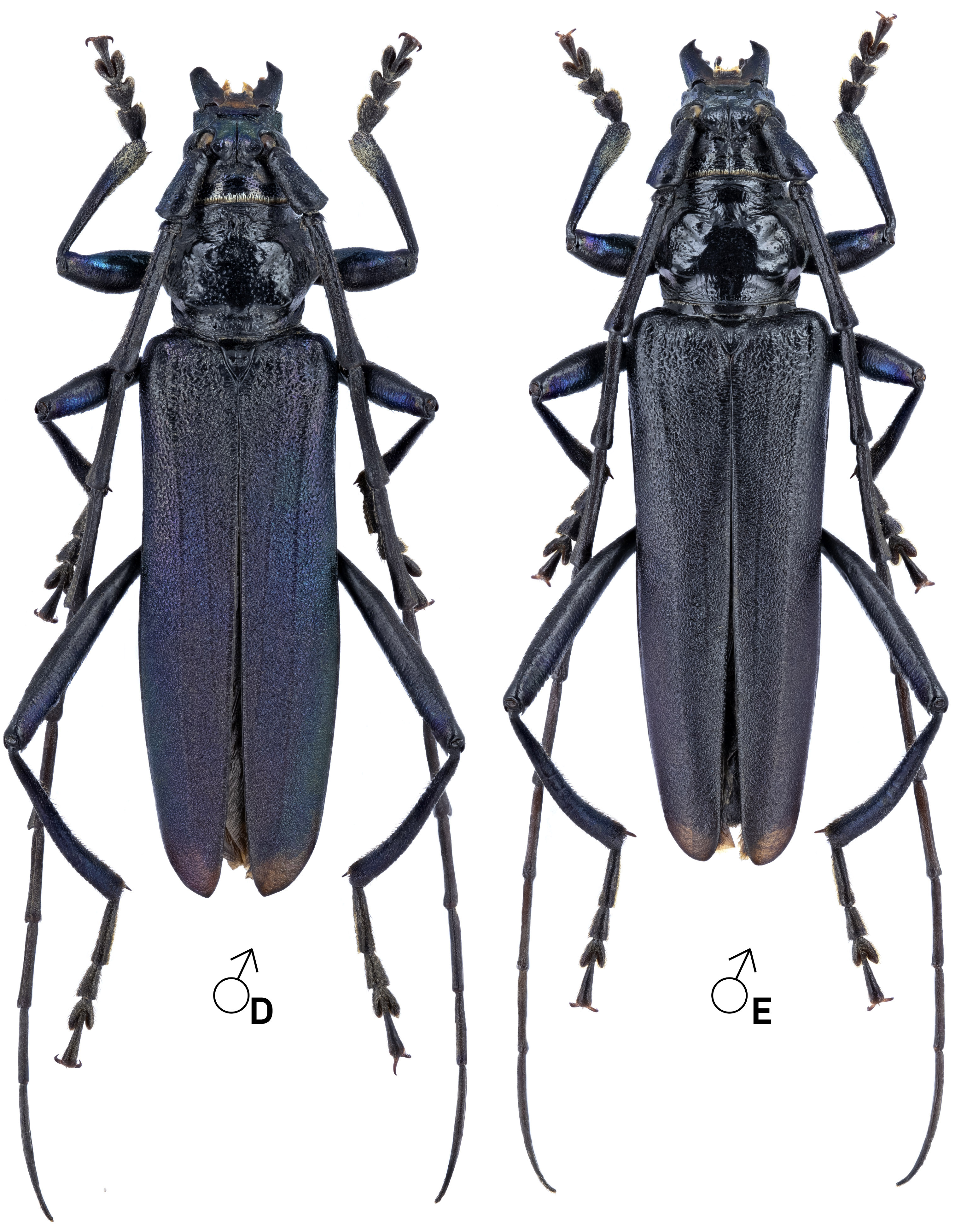
[Photo © David Navrátil, click on the picture for 4K resolution]
♂D and ♂E - Polička environs (Svitavy district, Pardubice region, East Bohemia, Czechia) on August 13, 1986 (collected by Josef Havlík)
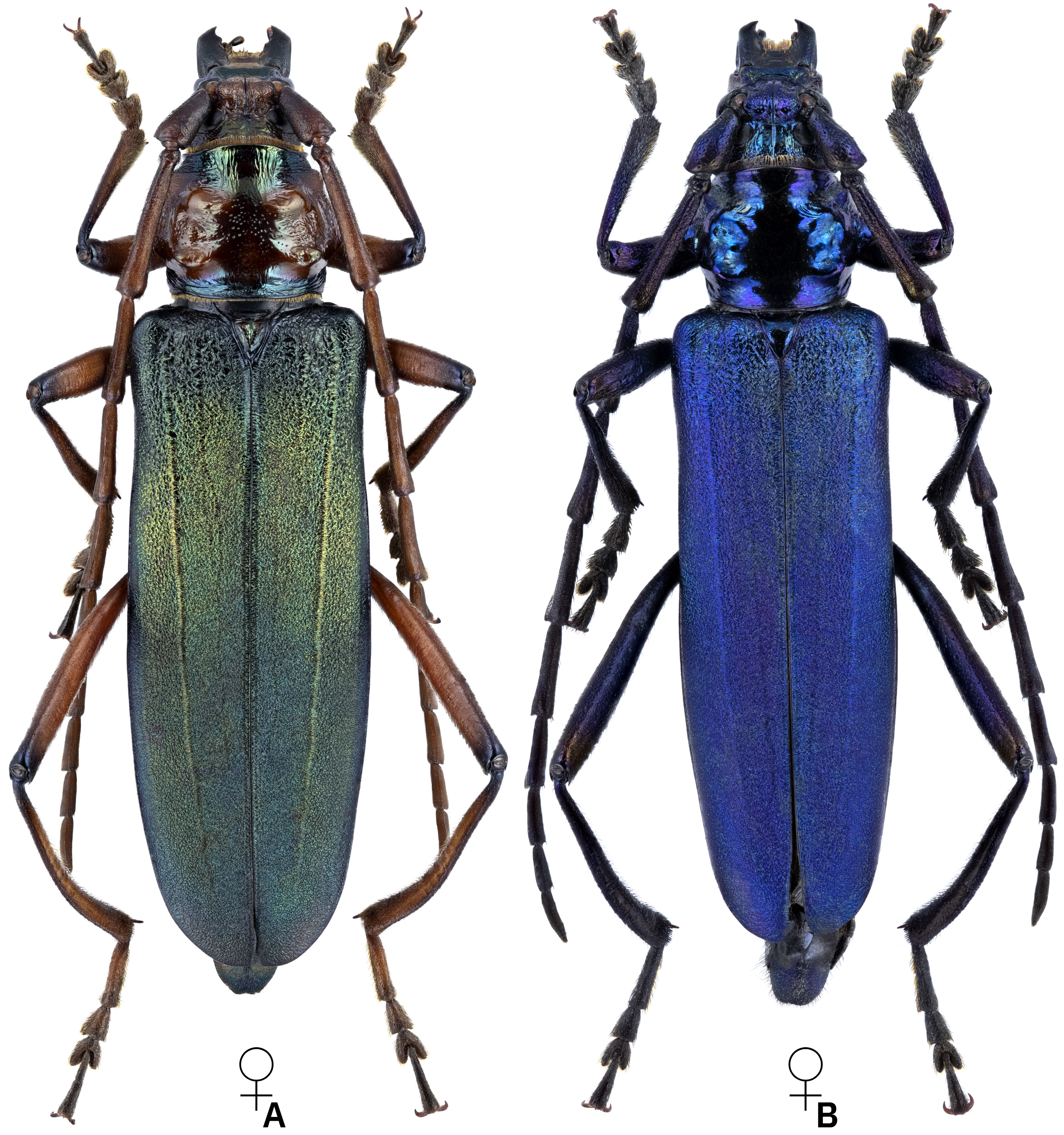
[Photo © David Navrátil, click on the picture for 4K resolution]
♀A - Aromia moschata moschata ab. semitestacea Heyrovský, 1941 [★], Pomezí village environs (Svitavy district, Pardubice region, East Bohemia, Czechia) on August 9, 1996 (collected by David Navrátil)
♀B - Kuchyňa environs (Malacky district, Bratislava region, Slovakia) on July 6, 2008 (collected by Lubor Havlík)
[★]
Heyrovský L.:
Dvě nové formy tesaříků / Zwei neue Bockkäfer-Formen. (Col., Ceramb.).
Časopis České Společnosti Entomologické, Praha 38: 56-58, 1941. [download]
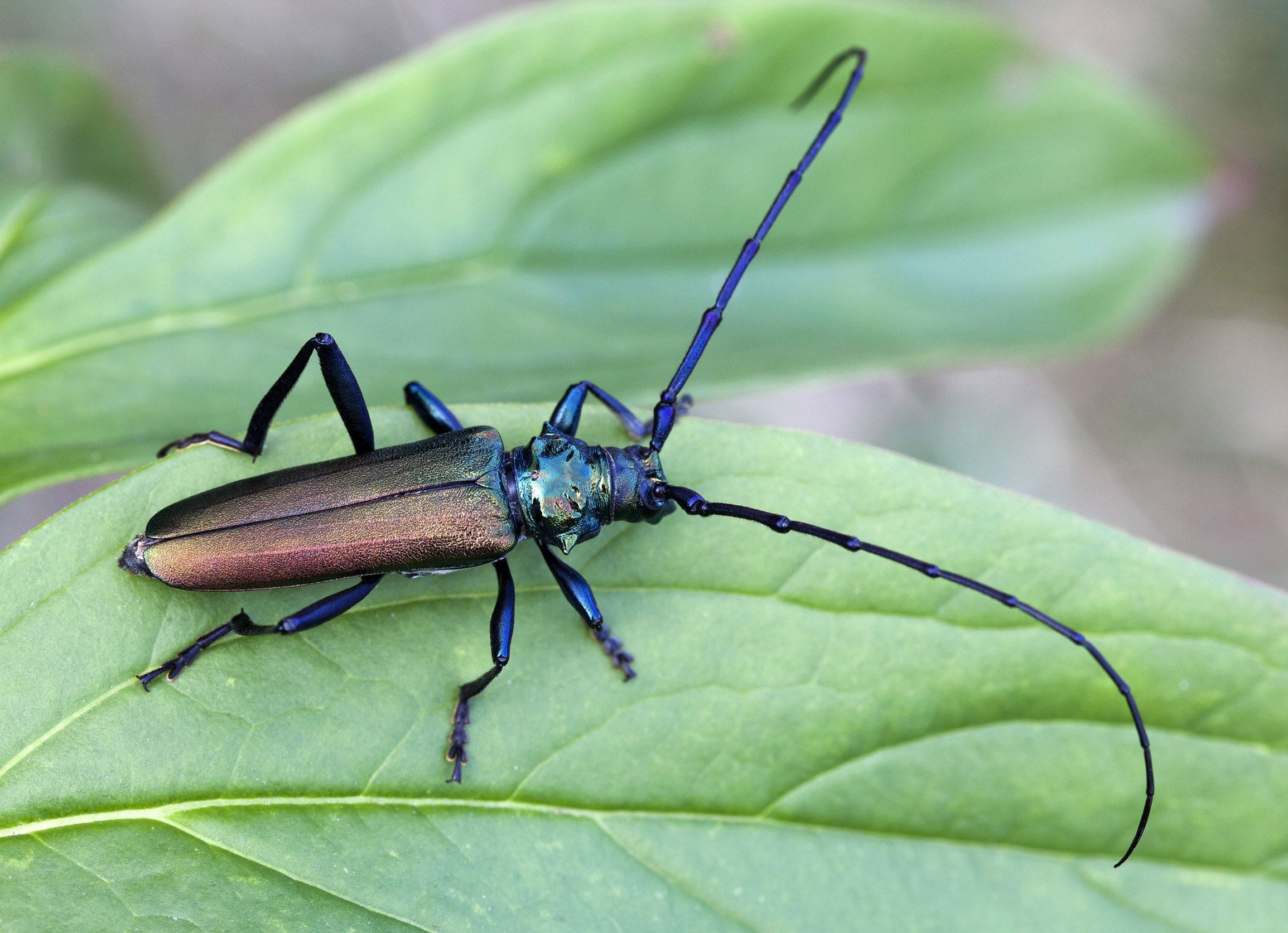
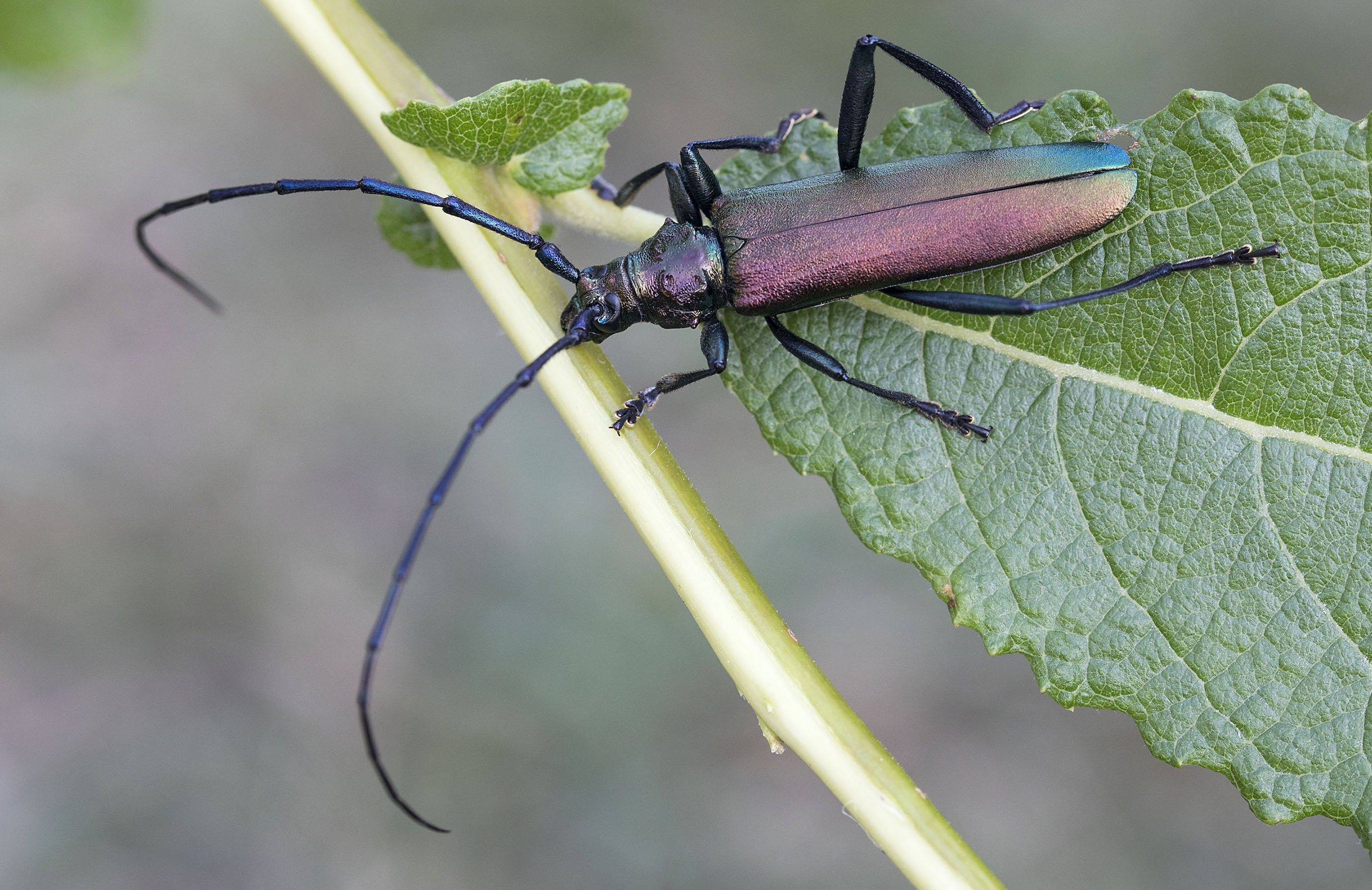
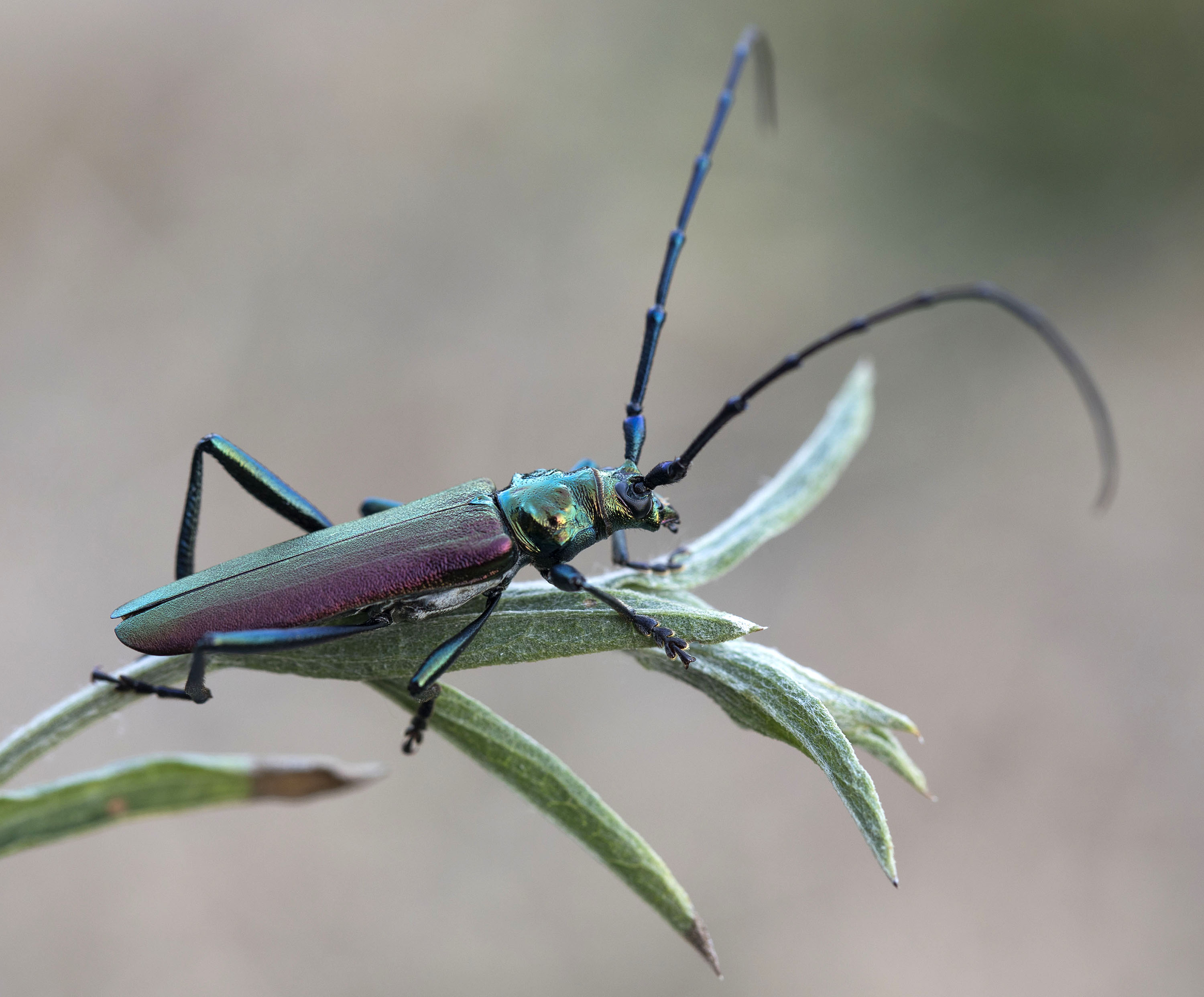
[Photo © Daniel Rydzi]
The depicted living males were photographed in Nové Butovice (Prague, Central Bohemia, Czechia) on July 23, 2015 and in Laax village environs (Surselva district, Graubünden canton,
Switzerland) on August 1, 2018, respectively.
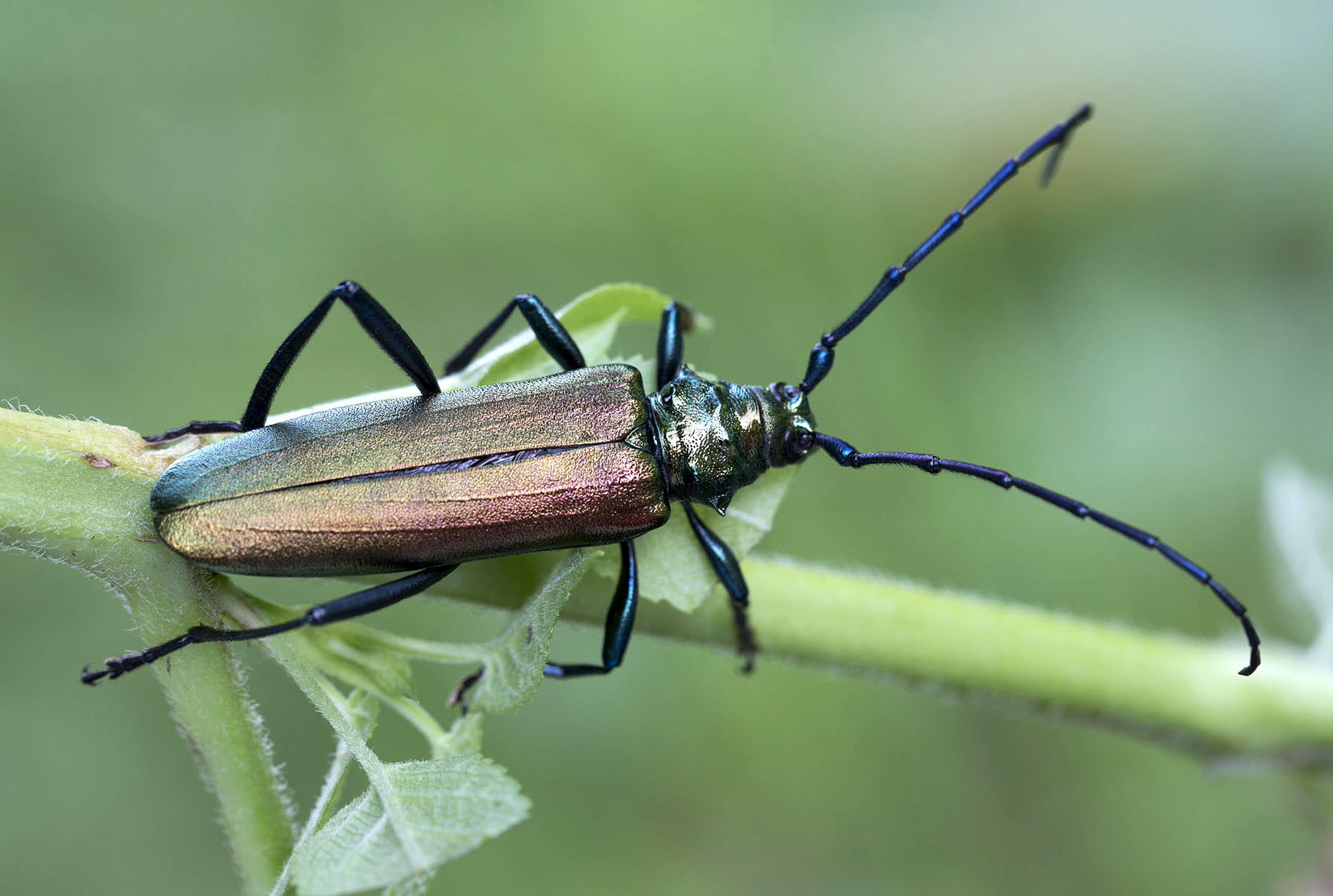
[Photo © Daniel Rydzi]
This female was photographed in Dobratsch (Villacher Alps, Villach environs, Carinthia, Austria) on August 5, 2019.
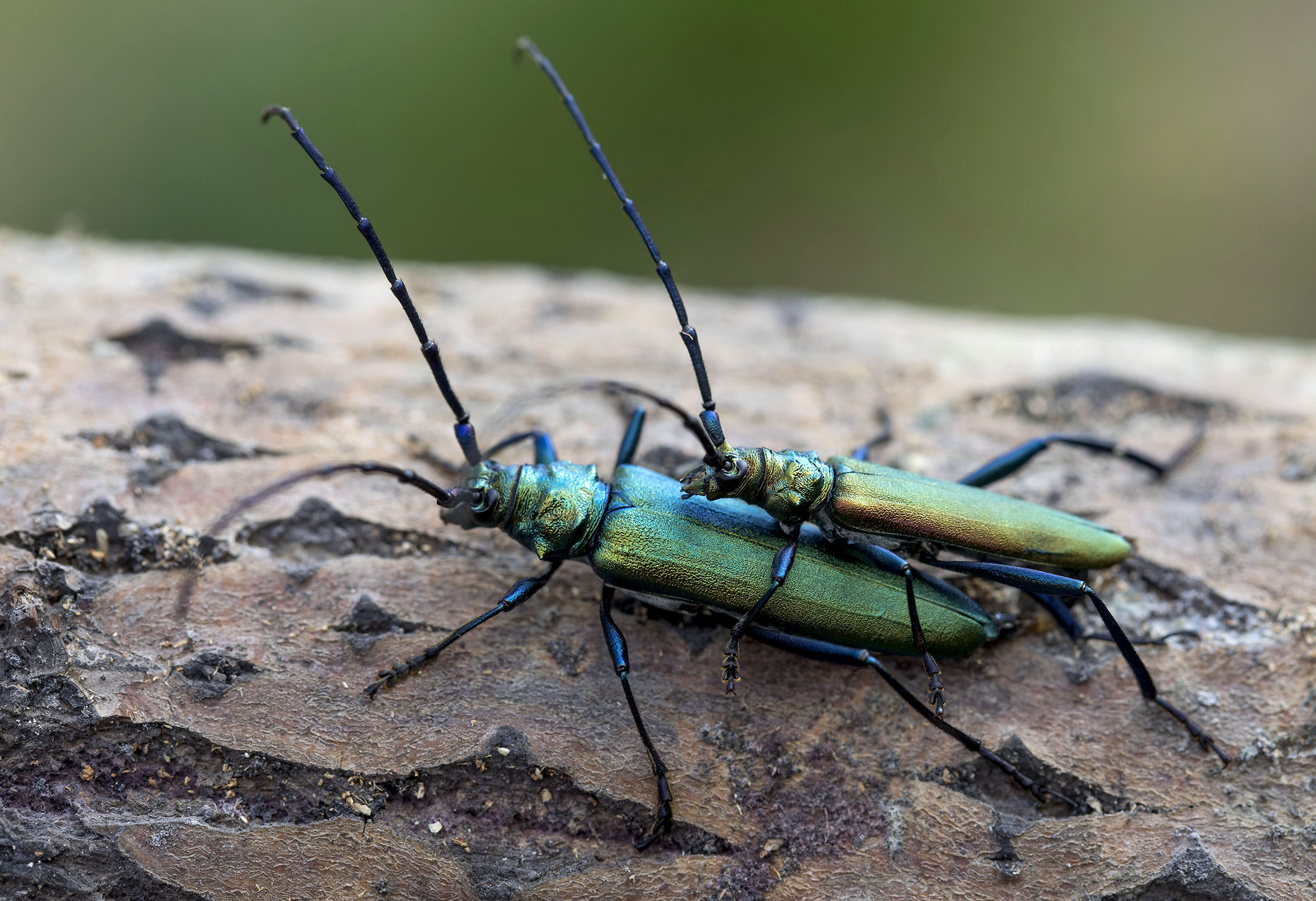
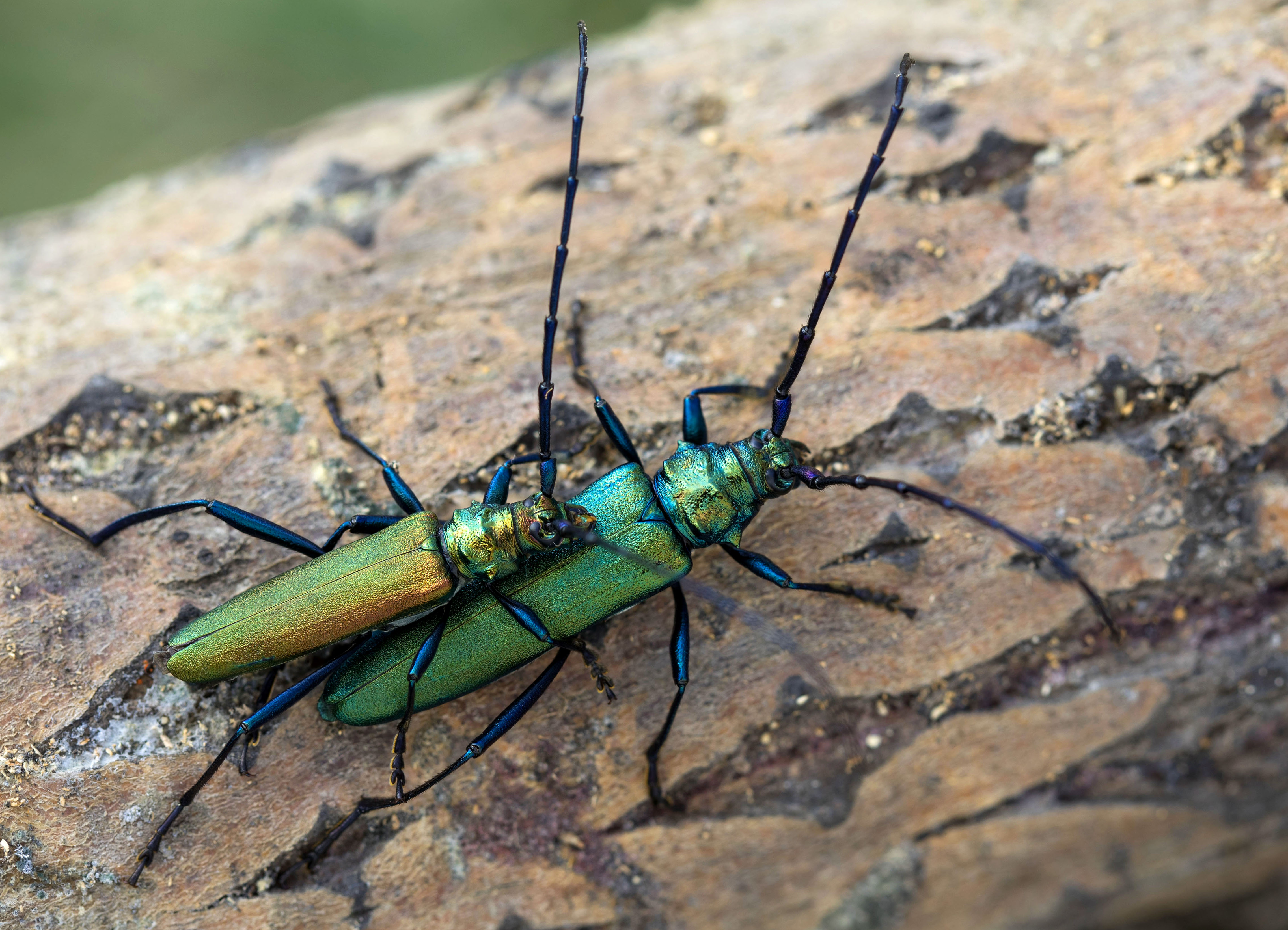
[Photo © Daniel Rydzi]
Depicted mating couple was reared from larvae found in goat willow in Králův Dvůr - Zahořany (Beroun district, Central Bohemia Czechia) in April 2020.
| Subfamilia | Cerambycinae Latreille, 1802 |
| Tribus | Callichromatini Blanchard, 1845 |
| Genus | Aromia Audinet-Serville, 1833 |
| Species | Aromia moschata (Linnaeus, 1758) |
| Subspecies | Aromia moschata moschata (Linnaeus, 1758) |
